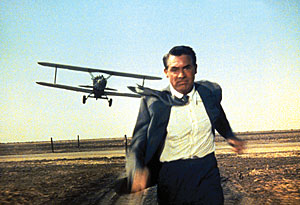 |
One illustrative find is the Studio Ghibli collection I came across. Studio Ghibli is synonymous with the name Hayao Miyazaki, one of the world's most respected animators and creator of some of Japan's most popular animated characters. Studio Ghibli's box-office shattering creations and its huge influence have earned Miyazaki the apt, if perhaps chauvinistic, label of the Walt Disney of Japan. But his work has a level of sophistication that is not often found among his counterparts in western popular animation, even while it resonates with the experience and tastes of a young audience.
In his meticulously crafted, fully realised, fantastical worlds, populated with complex characters, Miyazaki draws on themes of mankind's uneasy relationship with nature, our tendency for war and violence and our resilience and hope that he seems to believe will preserve us from our own disasters. He constantly probes the problematic relations between the world of modernity and the beleaguered spirit world it has supplanted. Gods and spirits operate juxtaposed with our world, and few humans can recognise them, let alone placate or relate to them. Miyazaki provides the requisite sense of wonder that we expect from good animation, but often he also does something more, to leave us pondering over the serious themes that inform his little universes and weigh heavily on our big world.
You would be hard-pressed to find a collection as comprehensive as the one dedicated to Alfred Hitchcock: a whopping five-disc set with around 50 titles amounting to dozens of hours of screening time. Hitchcock needs no introduction, being one of the most widely recognised directors in the history of cinema (partly, it must be said, due to his self-promotion and showmanship). Hitchcock's gripping suspense thrillers remain entertaining and accessible even half a century after they were made. The collection is well representative of his career, with material from both sides of the Atlantic and from every decade of his working life, including episodes of the television show Alfred Hitchcock Presents. Best of all, the collection covers his most important period?the 1950s?very well, with Rear Window (1954) and North by Northwest (1959) among others.
The Pedro Almod?var collection is populated by women careering wildly along the edge of a precipice to disaster and men driven by obsessive desires. The films are entertaining, campy and stylish, even when dark and despairing. I find a thread of continuity stretching between Hitchcock and Almod?var: the shared experimentation with film noir and the exploration of psychoses and existentialism. Clearly a debt is owed, but an Almod?var film exists in another moral universe: absent is the judgment that Hitchcock's films render on their outcasts.
While Hitchcock's characters are cast as fugitives by circumstance, only to be rehabilitated before the end, Almod?var's aren't framed innocents but the real McCoy, lobbing fierce, if futile, attacks on the structures of society. Almod?var embraces the subversive, identifies with the rejected, and welcomes our human foibles.
The Pedro Almod?var collection includes most of his oeuvre, including the early, flawed and outrageous Pepi, Luci, Bom & Other Girls on the Heap (1980) and real gems like Women on the Verge of Nervous Breakdown (1988), but sadly Volver (2006), his most recent work, is bereft of English subtitles (like others in this collection). The old adage applies: buyer beware.



